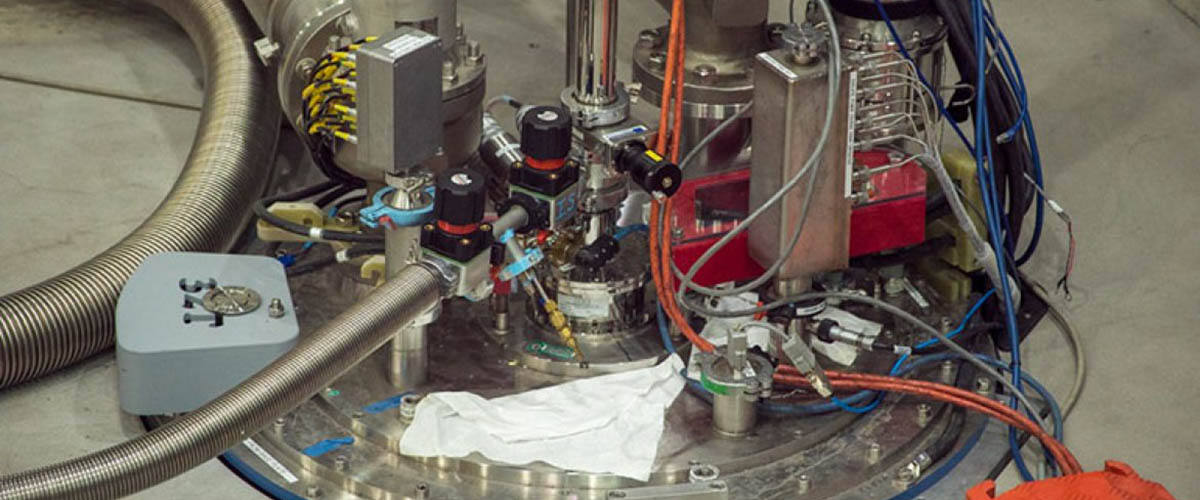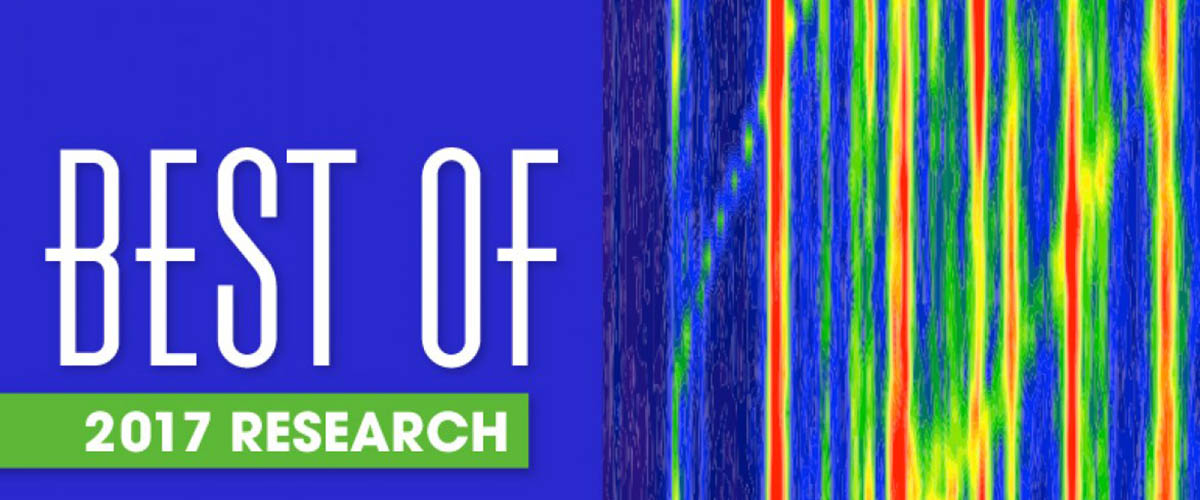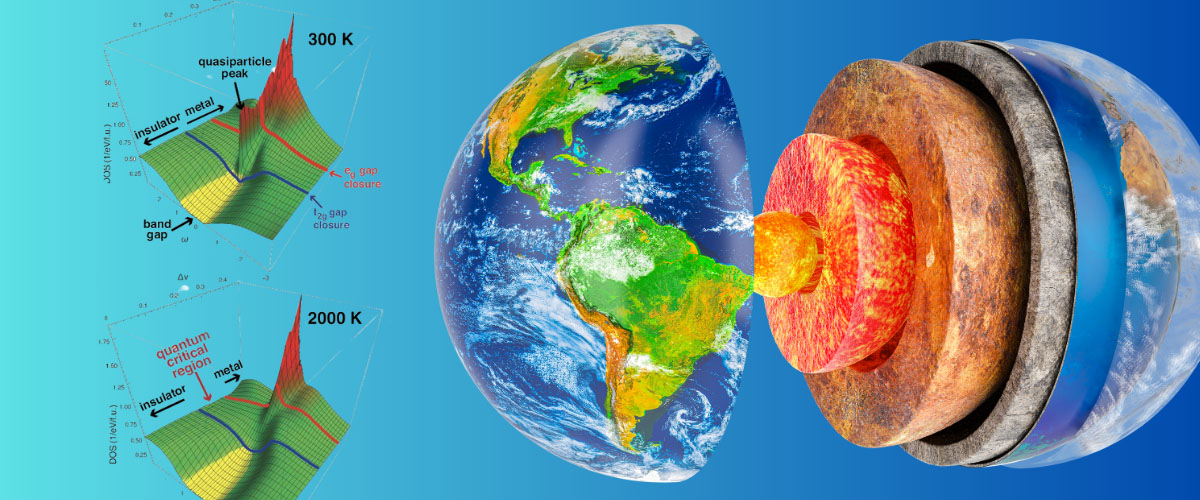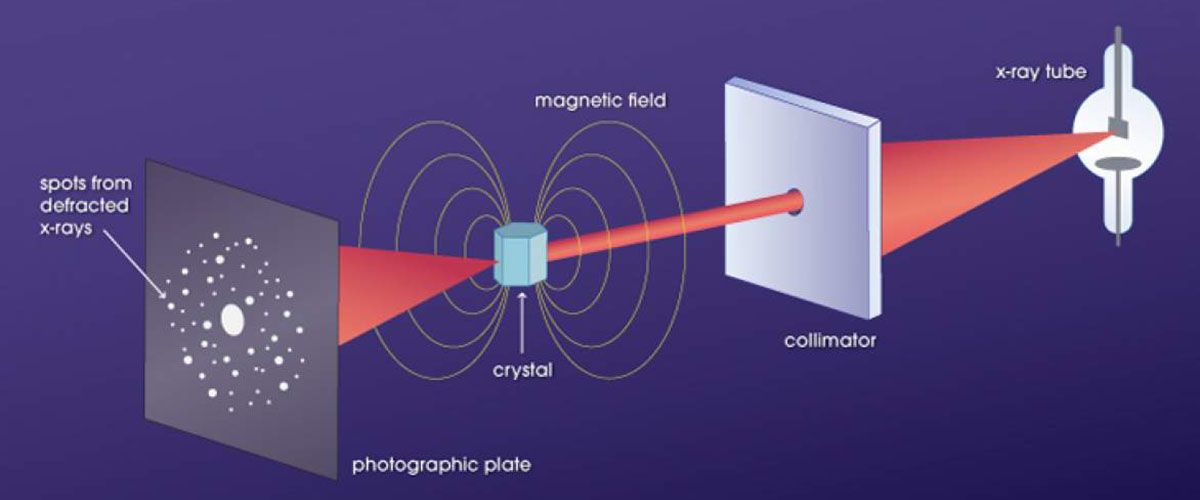Contact: Kristin Roberts
TALLAHASSEE, Fla. — The newest member of the MagLab fleet - the 32 tesla (T) all-superconducting magnet - is now officially open for users, offering scientists the world's highest superconducting field suitable for sensitive quantum matter experiments.
Housed in an expansion of the lab's specially-designed millikelvin research space for experiments conducted down to temperatures within 14 thousandths of a Kelvin (K) above absolute zero, the 32 T has also received its official designation, SCM-32 T, and joins a prestigious team of instruments within the lab's DC Field Facility.
"The launch of user operations on this new magnet is like expanding the MagLab family," said DC Field Facility director Tim Murphy. "Of course with the magnet itself, but also through the new researchers who will now have an opportunity to leverage this instrument to make important research discoveries that will expand our understanding of the physics of complex quantum materials."
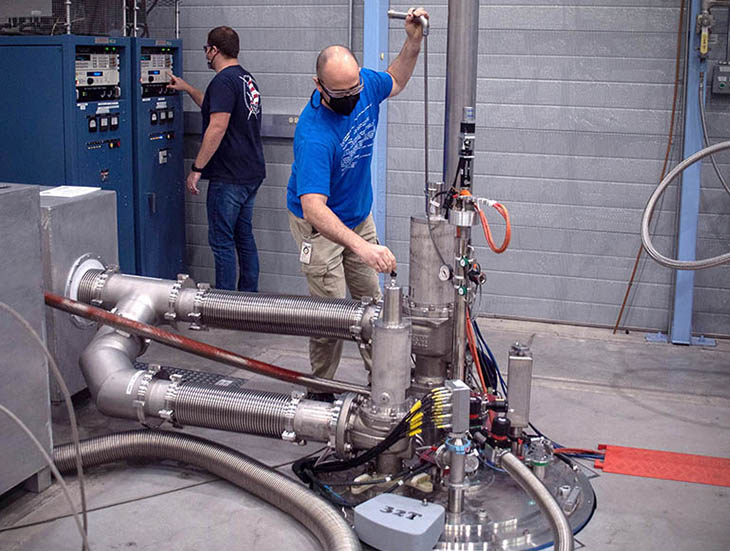
MagLab researchers Troy Brumm and Robby Nowell prepare the SCM-32 T for users.
SCM-32 T combines a 15 T low-temperature superconducting outsert made by industry partner Oxford Instruments and a 17 T high-temperature superconducting insert designed by MagLab engineers to create a very stable, homogeneous research environment. The magnet system operates in a bath of liquid helium at 4.2 K and has an inner diameter of 34 mm, about the size of the grip on a tennis racquet.
In order to maximize the magnet's potential as a research tool, MagLab scientists and engineers created two custom designed, very stable and electrically-quiet DC magnet power supplies. The magnet currently has two experimental insert options: a variable temperature insert (VTI - Janis Research) with a temperature range of 1.5 K-300 K and an sample space of 27 mm and a second top-loading into mixture (TLM) dilution refrigerator (Oxford Instruments Kelvinox®TLM) with a temperature range of 0.014 K-1.0 K and a sample space of 25 mm that allows users to get very close to absolute zero provide a clearer picture of the behavior of quantum matter. Specialty probes are also available for SCM-32 T experiments including one probe with a rotation stage that is wired for DC-100 kHz (twisted pairs & SS coax) and a second probe configured for condensed matter Nuclear Magnetic Resonance experiments.

Rotation probe for the VTI showing sample position.
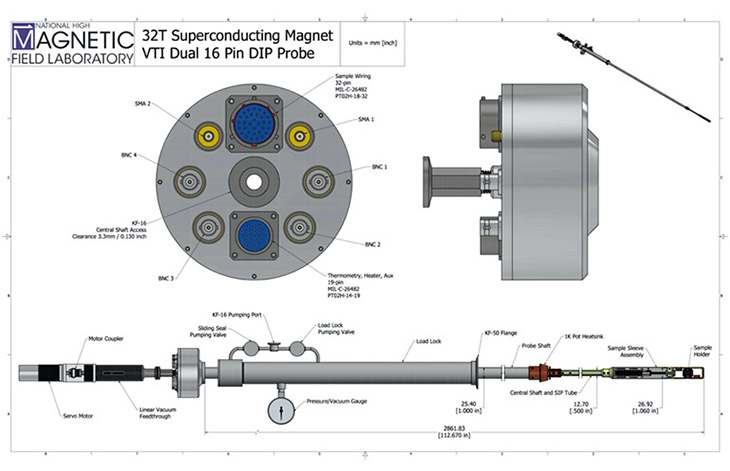
General assembly drawing of the rotating probe showing load-lock and user interface at room temperature and field center.
The first users measured Nuclear Magnetic Resonance of a magnetic system with a spin nematic state. More recent data, taken using the rotation probe for the VTI, is shown below. Additional probes with different capabilities (high frequency, optical fiber access, etc…) are currently in the design stage and will be launched in the coming months.
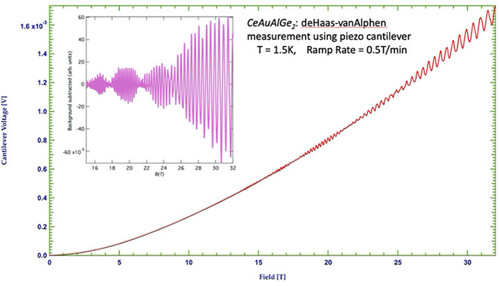
Quantum oscillation measurement made in the 32 T magnet using a very sensitive piezo cantilever.
Eight years in the making, the 32 T reached full field in December 2017 and has since been relocated, commissioned and tested. The magnet was funded by the National Science Foundation's Division of Material Research and the State of Florida. There is no cost to scientists to use any of the MagLab's magnets. Interested researchers can submit a proposal for magnet time through the MagLab's online system. Those proposals will be reviewed for scientific merit and broader impact before magnet time is awarded.
For additional information on the system go to 32 Tesla Superconducting Magnet (SCM-32 T) page.



